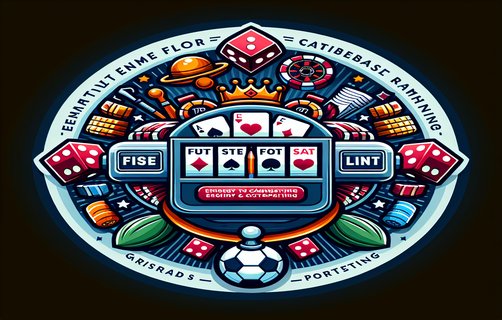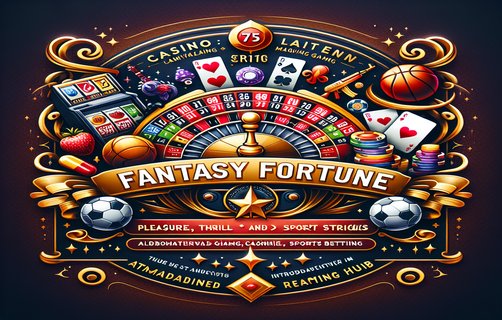Mastering the Poker Circle: Strategies for Successful Play
पॉकर सर्कल में मास्टरिंग: सफल खेल के लिए रणनीतियाँ
In the realm of poker, the dynamics of the game extend far beyond the cards in your hand. Within a poker circle, understanding profit goals and adjustment techniques can significantly enhance your gameplay. Profit goals are not merely about winning the pot but also about maximizing your expected value over time. Players should set realistic and measurable profit goals that align with their playing style and bankroll. For example, a player with a moderate bankroll might aim for a 20% profit over a session, while a high-stakes player might target much higher returns. Adjusting these goals based on your performance metrics allows for a more tailored approach to each session, ensuring that you remain strategic and avoid the pitfalls of emotional betting.
Next, amount distribution guidelines are crucial for maintaining a balanced approach at the table. It involves analyzing your stack size in relation to the blinds and understanding when to push for an aggressive play or when to take a more conservative route. One effective technique is the 'Rule of Thirds,' where players divide their total stack into thirds—one for aggressive bets, one for medium-play hands, and one reserved for setbacks. This distribution ensures that players remain resilient, even during inevitable downswings.
Error control methods also play a pivotal role in long-term success at poker. The ability to recognize and correct mistakes is essential. Players often use poker tracking software to analyze their hands post-game. By identifying patterns in both winning and losing hands, players can recalibrate their strategies to eliminate costly decisions. Additionally, revisiting hand histories for personal review can be an enlightening exercise, helping to refine decision-making under pressure.

Controlling the game pace is another critical aspect that can influence outcomes. An aggressive player may attempt to quicken the pace, hoping to rattle opponents, while a more patient player may take their time to evaluate every move. Finding the right tempo balance is key. If you notice your opponents are getting anxious, leveraging this psychological aspect can put you in a favorable position. Keeping the game pace steady not only maintains your composure but also allows you to execute strategies more effectively.
Facial expressions convey a wealth of information. Mastering the art of poker face is vital—controlled expressions can discourage opponents from reading your confidence or intentions. Exercises such as mindfulness and meditation can help players cultivate a neutral demeanor, capable of withstanding the emotional highs and lows of the game. Understanding how to read opponents’ facial cues can also provide invaluable insights, giving you a clearer picture of their hand strength.
Dealer winning scenarios are often overlooked but are crucial for players to understand. Recognizing how dealers calculate winnings and distribute pots can lead to strategic advantages. For instance, if a dealer frequently favors players showing aggression, adopting a more aggressive strategy at that table could prove beneficial.
In conclusion, mastering the poker circle involves a multifaceted approach integrating profit goals, strategic adjustments, financial awareness, psychological control, and social cues. Each of these aspects, when combined, can transform a player's ability from basic to exceptional, leading to greater successes and enjoyment in the game.
पॉकर के क्षेत्र में, खेल की गतिशीलता केवल आपके हाथ में मौजूद पत्तों से बहुत आगे बढ़ जाती है। एक पोकर सर्कल के भीतर, लाभ लक्ष्यों और समायोजन तकनीकों को समझना आपके खेल के तरीके को काफी बढ़ा सकता है। लाभ लक्ष्य केवल पॉट जीतने के लिए नहीं होते बल्कि समय के साथ अपने अपेक्षित मूल्य को अधिकतम करने के बारे में होते हैं। खिलाड़ियों को यथार्थवादी और मापनीय लाभ लक्ष्यों को सेट करना चाहिए जो उनके खेलने की शैली और बैंक रोल के साथ मेल खाते हों। उदाहरण के लिए, एक मध्यम बैंक रोल वाला खिलाड़ी एक सत्र के दौरान 20% लाभ पाने का लक्ष्य रख सकता है, जबकि उच्च-दांव वाला खिलाड़ी बहुत अधिक वापसी का लक्ष्य रख सकता है। आपके प्रदर्शन मीट्रिक के आधार पर इन लक्ष्यों का समायोजन करना प्रत्येक सत्र पर अधिक अनुकूलित दृष्टिकोण सुनिश्चित करता है, जिससे आप रणनीतिक बने रह सकें और भावनात्मक सट्टेबाजी के खतरों से बच सकें।
अगला, राशि वितरण दिशानिर्देश एक संतुलित दृष्टिकोण को बनाए रखने के लिए बहुत महत्वपूर्ण हैं। इसमें आपके स्टैक के आकार का विश्लेषण करना शामिल है, जो ब्लाइंड्स के संबंध में है, और यह समझना कि आक्रामक खेल के लिए कब आगे बढ़ना है या कब अधिक संवेदनशील रास्ता लेना है। एक प्रभावी तकनीक 'तीन का नियम' है, जहां खिलाड़ी अपने कुल स्टैक को तीन हिस्सों में विभाजित करते हैं - एक आक्रामक बेट के लिए, एक मध्य-खेल हाथों के लिए, और एक सेटबैक के लिए आरक्षित। यह वितरण यह सुनिश्चित करता है कि खिलाड़ी तेजी से होने वाले सभी उतार-चढ़ावों के दौरान भी लचीला बने रहें।

त्रुटि नियंत्रण विधियाँ दीर्घकालिक सफलता में एक महत्वपूर्ण भूमिका निभाती हैं। गलतियों को पहचानना और सुधारना आवश्यक है। खिलाड़ी अक्सर अपने खेल के बाद अपने हाथों का विश्लेषण करने के लिए पोकर ट्रैकिंग सॉफ्टवेयर का उपयोग करते हैं। जीत हासिल करने वाले और हारने वाले हाथों में पैटर्नों की पहचान करके, खिलाड़ी अपनी रणनीतियों को पुनः समायोजित कर सकते हैं ताकि महंगे निर्णयों को समाप्त किया जा सके। इसके अतिरिक्त, व्यक्तिगत समीक्षा के लिए हाथों के इतिहास को फिर से देखना एक ज्ञानवर्धक अभ्यास हो सकता है, जो खेल के दबाव में निर्णय लेने की क्षमता को परिष्कृत करने में मदद करता है।
खेल की गति को नियंत्रित करना एक और महत्वपूर्ण पहलू है जो परिणामों को प्रभावित कर सकता है। एक आक्रामक खिलाड़ी संभावित रूप से गति बढ़ाने का प्रयास कर सकता है, उम्मीद करता है कि विरोधियों को झटका लगेगा, जबकि एक धैर्यवान खिलाड़ी प्रत्येक चाल का मूल्यांकन करने के लिए समय ले सकता है। सही मध्यम संतुलन खोजना महत्वपूर्ण है। यदि आप देखते हैं कि आपके विरोधी व्याकुल हो रहे हैं, तो इस मनोवैज्ञानिक पहलू का लाभ उठाना आपको एक अनुकूल स्थिति में रख सकता है। खेल की गति को स्थिर रखना न केवल आपके संयम को बनाए रखता है बल्कि आपको रणनीतियों को अधिक प्रभावी ढंग से निष्पादित करने की अनुमति भी देता है।
चेहरे की अभिव्यक्तियाँ बहुत सारी जानकारी देती हैं। पोकर फेस का कला सीखना जरूरी है - नियंत्रित अभिव्यक्तियाँ विरोधियों को आपके आत्मविश्वास या इरादों को पढ़ने से हतोत्साहित कर सकते हैं। माइंडफुलनेस और ध्यान जैसे व्यायाम खिलाड़ियों को एक तटस्थ स्वरूप विकसित करने में मदद कर सकते हैं, जो खेल के भावनात्मक चरमोत्कर्ष और अवनति को सहन कर सके। विरोधियों के चेहरे की इशारों को पढ़ने का ज्ञान भी अमूल्य अंतर्दृष्टि प्रदान कर सकता है, जिससे आपको उनके हाथों की ताकत के बारे में स्पष्ट चित्र मिलता है।
डीलर जीतने के परिदृश्य अक्सर अनदेखे होते हैं लेकिन खिलाड़ियों के लिए समझना बहुत महत्वपूर्ण है। यह पहचानना कि डीलर जीतने और पॉट वितरित करने की गणना कैसे करते हैं, रणनीतिक लाभ की ओर ले जा सकता है। उदाहरण के लिए, यदि एक डीलर अक्सर आक्रामकता दिखाने वाले खिलाड़ियों को प्राथमिकता देता है, तो उस टेबल पर आक्रामक रणनीति अपनाना फायदेमंद हो सकता है।
अंत में, पोकर सर्कल में मास्टरिंग एक बहुआयामी दृष्टिकोण को विकसित करने में शामिल है, जिसमें लाभ लक्ष्यों, रणनीतिक समायोजन, वित्तीय जागरूकता, मनोवैज्ञानिक नियंत्रण और सामाजिक संकेत शामिल हैं। इन सभी पहलुओं को मिलाकर, खिलाड़ी की क्षमता को बुनियादी से असाधारण में बदलने की संभावना है, जिससे खेल में अधिक सफलता और आनंद प्राप्त होता है।

comments
PokerPro88
This article offers valuable insights on profit goals and distribution strategies!
ChipMaster555
Great tips on adjusting game pace—definitely something to keep in mind!
AllInAnita
I love the emphasis on error control methods; tracking hands has changed my game completely.
BluffingKing
The section on facial expressions is so true! A good poker face is half the battle.
Stackzilla
Interesting take on dealer winnings—never thought about adjusting my play based on the dealer!
RaiseThePot
Awesome read! The amount distribution guidelines are something I really needed.